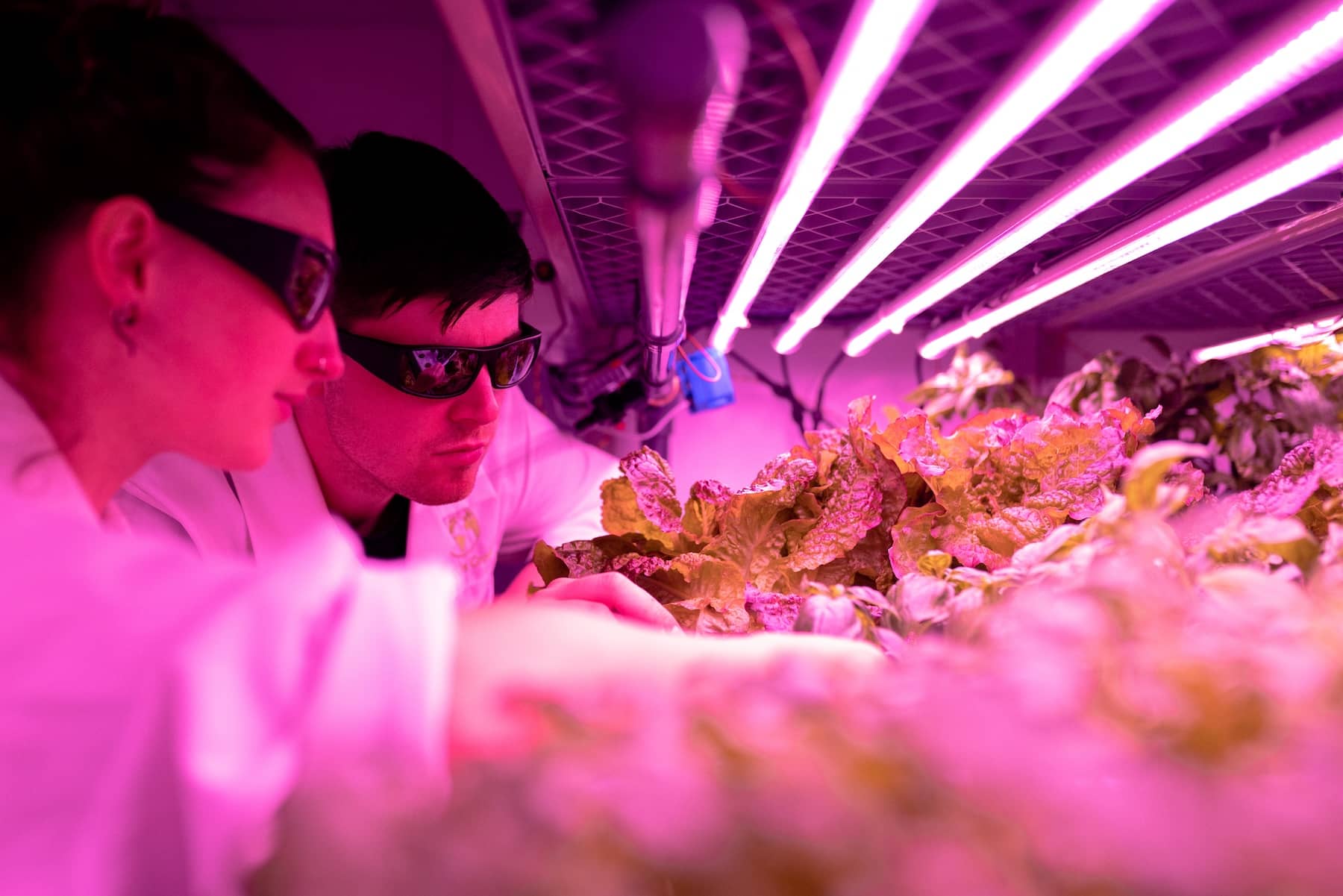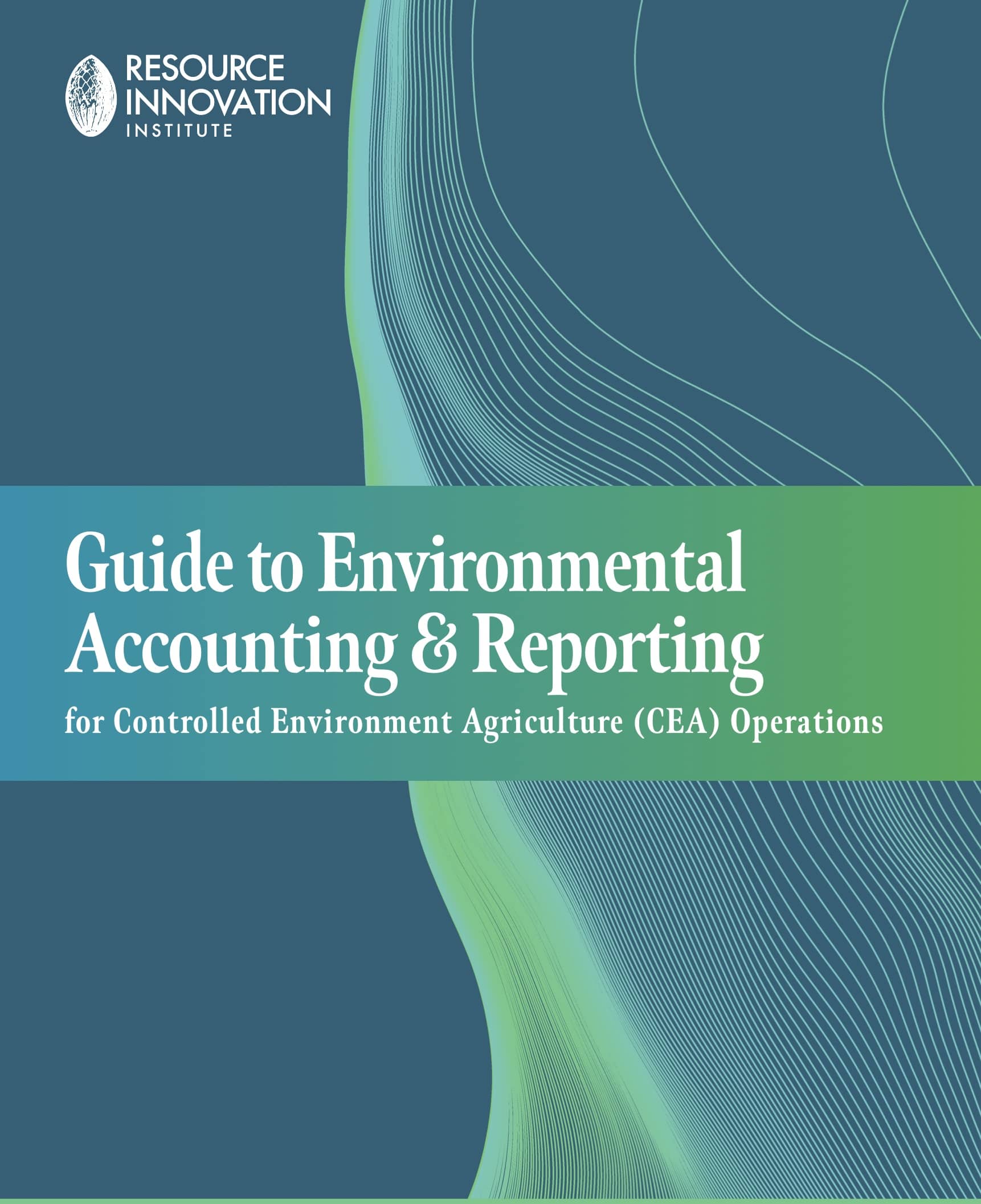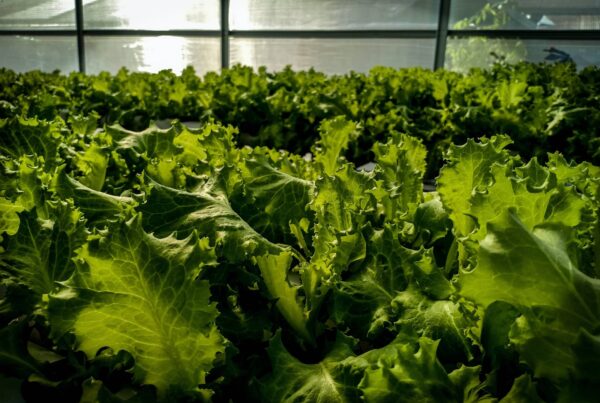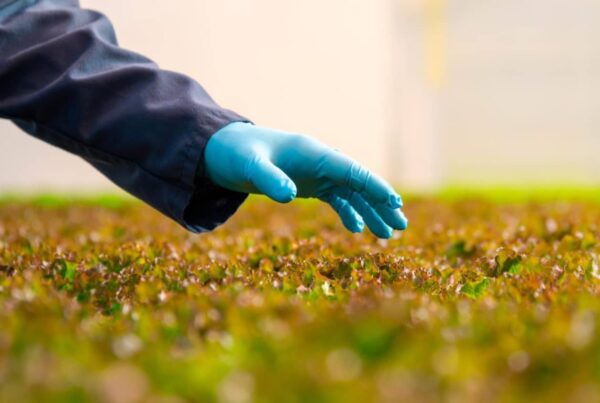Most controlled environment agriculture (CEA) businesses know the importance of tracking their operation’s key performance indicators (KPIs). Keeping tabs on metrics like cost per pound or area can help businesses gain valuable insight into operational efficiencies and allow them to easily compare their results against industry benchmarks and peers.
As legislators and utility providers make decarbonization a priority in both policy and energy production, CEA businesses should also turn to carbon KPI tracking as they aim to reduce their carbon footprint. For example, Maryland’s energy efficiency programs “are now going to be required to meet carbon [reduction] goals in addition to those for energy reduction,” says Frank Molander, C&I Market Development Lead at ICF, an RII-member organization. This means that the Commission and utilities will be determining carbon-related target KPIs for utility-funded programs. The question then becomes: how can indoor farms and greenhouses be a part of meeting these new carbon KPIs.
Beyond regulatory compliance, tracking carbon KPIs can help CEA operators reduce costs and increase environmental stewardship–the latter being a strong selling point for many consumers. Here, we explore some key carbon KPIs CEA operators can begin tracking, along with methods and resources for doing so.
Download Resource Innovation Institute’s Guide to Environmental Accounting & Reporting for more information, expert insights, and tips on measuring, analyzing, and reporting on carbon emissions data in your CEA operation.
What are Carbon KPIs and Why Are They Crucial for CEA?
Carbon KPIs are metrics that help businesses measure their greenhouse gas emissions and are categorized into Scope 1, 2, and 3 emissions.
Scope 1 emissions are those that are a direct result of the operation’s activities. This includes any onsite fuel combustion (e.g. a natural gas boiler/combined heat and power (CHP) unit, CO2 supplementation systems, and fugitive emissions from leaked refrigerants).
Scope 2 emissions are indirect emissions from energy purchased, like electricity. While CEA operators often don’t have a say in their utility’s energy sourcing (although some energy producers may offer greener sources as an opt-in program), the amount of energy strain the business places on the energy grid impacts how much carbon is emitted in the atmosphere by the utility.
Scope 3 emissions are another type of indirect emissions derived by the supply chain. This can include the transportation of goods, packaging, retail and consumer waste, and more. These emissions are generally harder to track and measure, but doing so can give a CEA operation a fuller carbon picture. Scope 3 emissions are especially important to track for local food production, where transportation distances can impact carbon savings. “If I live in Connecticut and my strawberries come to me from only 100 miles away versus Canada or California, that’s both quantifiable and meaningful,” Molander notes.
Beyond these groupings, there are several relevant carbon-related KPIs growers can leverage to understand their operation’s footprint. For starters, vegetable growers can track energy consumption per kilogram of produce to link efficiency directly to production. Lower energy use per kilogram of produce means reduced carbon emissions per unit produced.
For more on Scope 1, 2, and 3 emissions, read RII’s blog on “Scoping Out Carbon Emissions: here.
Similarly, tracking CO2 emissions from on-site fuel combustion (e.g. from boilers or generators) captures direct emissions under Scope 1 and provides insight into how operational choices like heating methods impact carbon output. Knowing this metric can help operations justify upgrading to efficient and less carbon-intensive heat pumps rather than natural gas heaters (depending on the cleanliness of the grid).
Another data point growers who generate their own energy can measure is CO2 emissions avoided by using on-site renewable energy instead of grid electricity. CEA businesses that adopt renewable energy can significantly reduce their carbon footprint, particularly in regions where grid power is generated from fossil fuels.
Key Tools and Methodologies for Tracking Carbon in CEA
There are many reference guides, government resources, and utility tools that can help CEA businesses measure their carbon footprint and identify ways to reduce it. In addition to contacting utility companies to understand their operation’s carbon footprint, CEA growers also can turn to the U.S. Environmental Protection Agency’s (EPA) Emissions & Generation Resource Integrated Database (eGRID) and GHG Emission Factors Hub to get an understanding of the environmental characteristics of different electricity production methods.
The eGRID “includes emissions, emission rates, generation, heat input, resource mix, and many other attributes [and] is typically used for greenhouse gas registries and inventories, carbon footprints for electricity purchases, consumer information disclosure, emission inventories and standards, power market changes, and avoided emission estimates,” per the EPA’s website. Meanwhile, the GHG Emission Factors Hub is a more comprehensive dataset (that includes eGRID) encompassing global warming potentials (GWPs), mobile combustion, upstream and downstream transportation, business travel, product transport, and employee commuting.
Understanding how a particular grid creates its energy is crucial to determining a CEA facility’s carbon footprint. With some research, growers can take into account when those carbon savings would actually be coming into effect based on when the utility is switching to those more carbon-intensive energy sources (e.g. gas-fired or coal-fired plants).
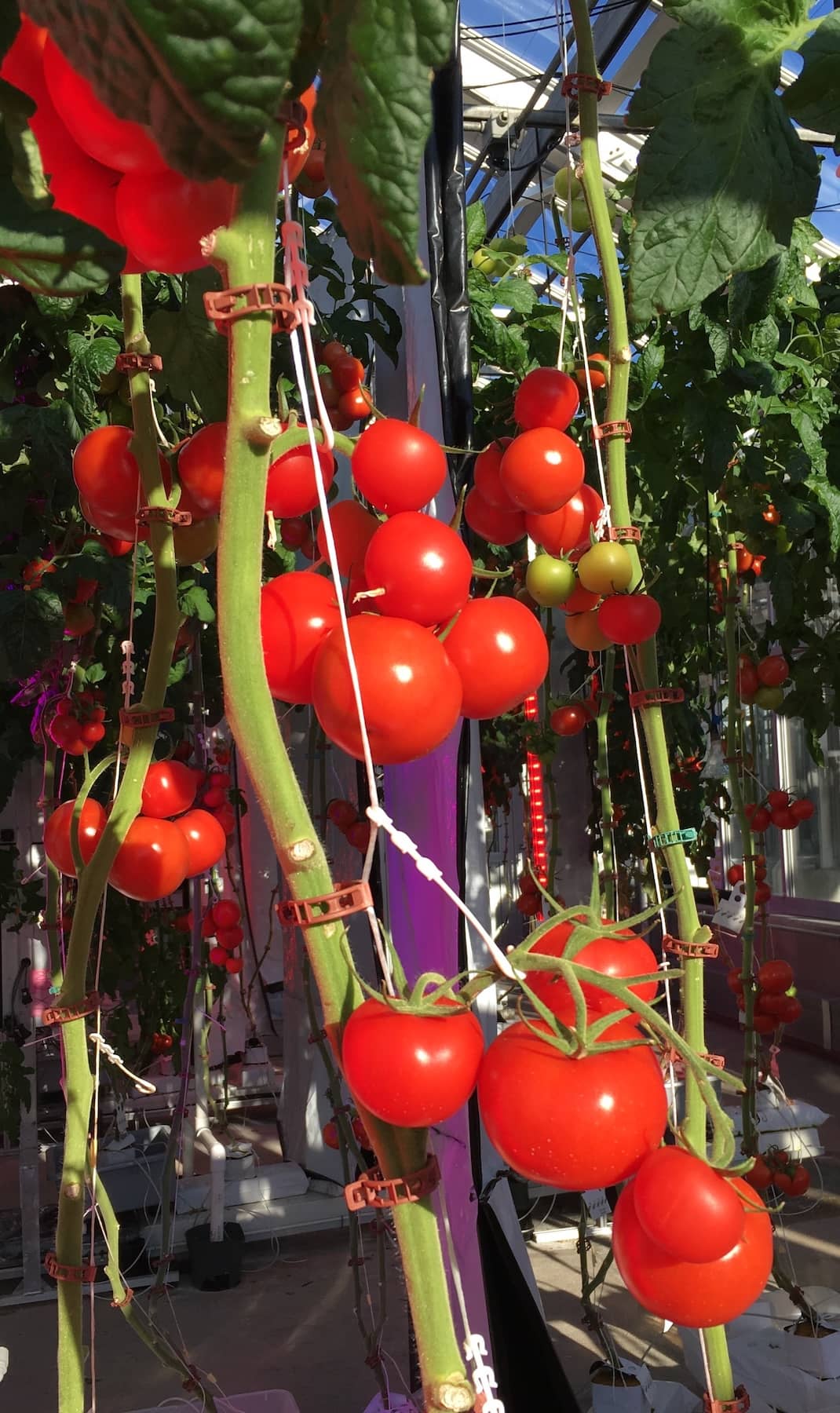
It also is important to keep in mind that renewable energy sources like solar photovoltaics and wind turbines may not be constantly operating at full efficiency, and there are several regional differences that can impact their efficacy. For example, photovoltaics in the Southwest U.S. may be more effective than in New England as the former has more sunny days annually. These factors further complicate carbon offset estimates, making collaborating with utility and carbon experts key to getting an accurate understanding of a project’s value.
Beyond the carbon intensity of utility-generated electricity, Andre Trudell, an Engineering Manager at CLEAResult, an RII-member organization, also turns to guidance from the Intergovernmental Panel on Climate Change (IPCC). In its 2019 refinement of its 2006 guidelines, the organization provides information on how to quantify emissions relating to energy, industrial processes, agriculture, and waste.
Additionally, the USDA’s Greenhouse Gas Inventory and Assessment Program has several reports and analyses “to establish methodologies and support decision-making, including analyzing and forecasting greenhouse gas emissions from the agriculture, forestry, and land sectors and assessing the mitigation potential of actions.”
Submetering for Deeper Understanding
For a more granular view of their operation’s energy usage and carbon intensity, indoor farmers and greenhouse producers can turn to submetering.
“Submetering, at the most basic level, is just being able to distinguish between what’s being used in the office space versus what’s being used in the warehouse versus what’s being used in the greenhouse itself,” Molander explains. Energy meters can also be attached to individual pieces of equipment to understand how specific systems draw energy.
Submetering costs can range from a few hundred to several thousand dollars, depending on the complexity of the system and the size of the greenhouse or indoor farm. When retrofitting submeters into an existing facility, it’s important to install meters in alignment with the facility’s growing cycle to avoid disruptions. Vertical farms can be more adaptable to submetering, as they typically are newer builds that can incorporate more advanced technology early in the design phase.
Proper metering can unlock energy savings, and by extension, carbon savings. As such, certain utilities may offer incentives for projects that aim to reduce energy use and/or convert to less carbon-intensive systems. These programs may help offset system upgrade costs. Additionally, that production data can pay for itself by helping CEA operators identify potential system efficiencies. For example, depending on crop types, by maintaining a slightly lower temperature–even just a couple of degrees Fahrenheit–growers can reduce energy usage without a huge impact on yield, translating to reduced carbon emissions and increased dollars saved.
“We always bring it back to dollars,” Trudell says. “We never leave it as you’re saving X therms or X kilowatt hours or CO2 equivalents. We always do a detailed review of billing information, understand exactly how [customers are] being billed for that specific energy and then as a result how many dollars they would save while keeping in mind there are typically various charges on energy bills based on consumption, demand, flat fees, etc.”
In both greenhouses and indoor farms, one key piece of technology that is needed for effective submetering is an advanced controls system. An advanced control system can collect the data needed to create detailed energy reports as well as enable growers to stage equipment usage based on grid data, such as pricing and carbon intensity.
These can be particularly effective when participating in demand response (DR) programs, Molander notes. “The opportunity for a CEA facility to participate in a DR program is in many ways going to be dependent upon the facility just having a level of infrastructure that can support that,” he says.
The Future of Carbon KPIs in CEA
As more utilities and policymakers turn to CEA to hit decarbonization goals, carbon tracking will become more integrated into CEA business models. Already, 27 countries and the European Union have implemented carbon taxes to incentivize decarbonization and make carbon-intensive processes less affordable.
Carbon reporting is the critical first step that CEA businesses should take, with a focus on Scope 1 and 2 emissions. Eventually, as indoor farmers and greenhouse operators get a better handle on their supply chains, this reporting should expand to include Scope 3 emissions, focusing on the benefits of localized food production and transportation efficiencies.
“It’s probably a blend of regulations and economics that will drive the future of carbon KPIs,” Molander predicts.
